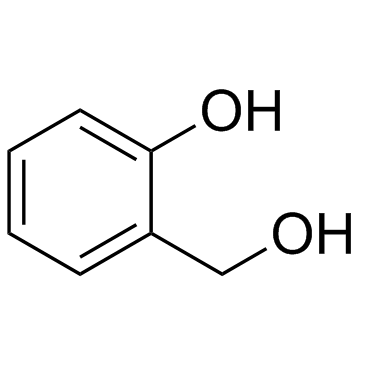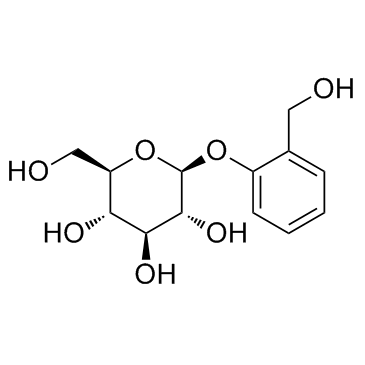Novel neurological and immunological targets for salicylate-based phytopharmaceuticals and for the anti-depressant imipramine.
G Ulrich-Merzenich, O Kelber, A Koptina, A Freischmidt, J Heilmann, J Müller, H Zeitler, M F Seidel, M Ludwig, E U Heinrich, H Winterhoff
Index: Phytomedicine 19(10) , 930-9, (2012)
Full Text: HTML
Abstract
Inflammatory processes are increasingly recognised to contribute to neurological and neuropsychatric disorders such as depression. Thus we investigated whether a standardized willow bark preparation (WB) which contains among other constituents salicin, the forerunner of non-steroidal antiphlogistic drugs, would have an effect in a standard model of depression, the forced swimming test (FST), compared to the antidepressant imipramine. Studies were accompanied by gene expression analyses. In order to allocate potential effects to the different constituents of WB, fractions of the extract with different compositions of salicyl alcohol derivative and polyphenols were also investigated. Male Sprague Dawley rats (n=12/group) were treated for 14 days (p.o.) with the WB preparation STW 33-I (group A) and its fractions (FR) (groups FR-B to E) in concentrations of 30 mg/kg. The FRs were characterized by a high content of flavone and chalcone glycosides (FR-B), flavonoid glycosides and salicyl alcohol derivatives (FR-C), salicin and related salicyl alcohol derivatives (FR-D) and proanthocyanidines (FR-E). The tricyclic antidepressant imipramine (20 mg/kg) (F) was used as positive control. The FST was performed on day 15. The cumulative immobility time was significantly (p<0.05) reduced in group A (36%), group FR-D (44%) and by imipramine (16%) compared to untreated controls. RNA was isolated from peripheral blood. RNA samples (group A, group FR-D, and imipramine) were further analysed by rat whole genome microarray (Agilent) in comparison to untreated controls. Quantitative PCR for selected genes was performed. Genes (>2 fold, p<0.01), affected by WB and/or FR-D and imipramine, included both inflammatory (e.g. IL-3, IL-10) and neurologically relevant targets. Common genes regulated by WB, FR-D and imipramine were GRIA 2 ↓, SRP54 ↓, CYP26B ↓, DNM1L ↑ and KITLG ↓. In addition, the hippocampus of rats treated (27 d) with WB (15-60 mg/kg WB) or imipramine (15 mg/kg bw) showed a slower serotonin turnover (5-hydroxyindol acetic acid/serotonin (p<0.05)) depending on the dosage. Thus WB (30 mg/kg), its ethanolic fraction rich in salicyl alcohol derivatives (FR-D) (30 mg/kg) and imipramine, by being effective in the FST, modulated known and new targets relevant for neuro- and immunofunctions in rats. These findings contribute to our understanding of the link between inflammation and neurological functions and may also support the scope for the development of co-medications from salicylate-containing phytopharmaceuticals as multicomponent mixtures with single component synthetic drugs.Copyright © 2012 Elsevier GmbH. All rights reserved.
Related Compounds
| Structure | Name/CAS No. | Molecular Formula | Articles |
|---|---|---|---|
 |
salicyl alcohol
CAS:90-01-7 |
C7H8O2 | |
 |
D-(-)-Salicin
CAS:138-52-3 |
C13H18O7 |
|
Cellular apoptosis and cytotoxicity of phenolic compounds: a...
2005-11-17 [J. Med. Chem. 48 , 7234-42, (2005)] |
|
Functional characterization of two acyltransferases from Pop...
2015-05-01 [Phytochemistry 113 , 149-59, (2015)] |
|
Salicyl alcohol oxidase of the chemical defense secretion of...
2008-07-11 [J. Biol. Chem. 283(28) , 19219-28, (2008)] |
|
Rapid syntheses of benzopyrans from o-OBOC salicylaldehydes ...
2002-10-04 [J. Org. Chem. 67(20) , 6911-5, (2002)] |
|
Enzymatic synthesis of two salicin analogues by reaction of ...
2004-06-01 [Carbohydr. Res. 339(8) , 1517-29, (2004)] |